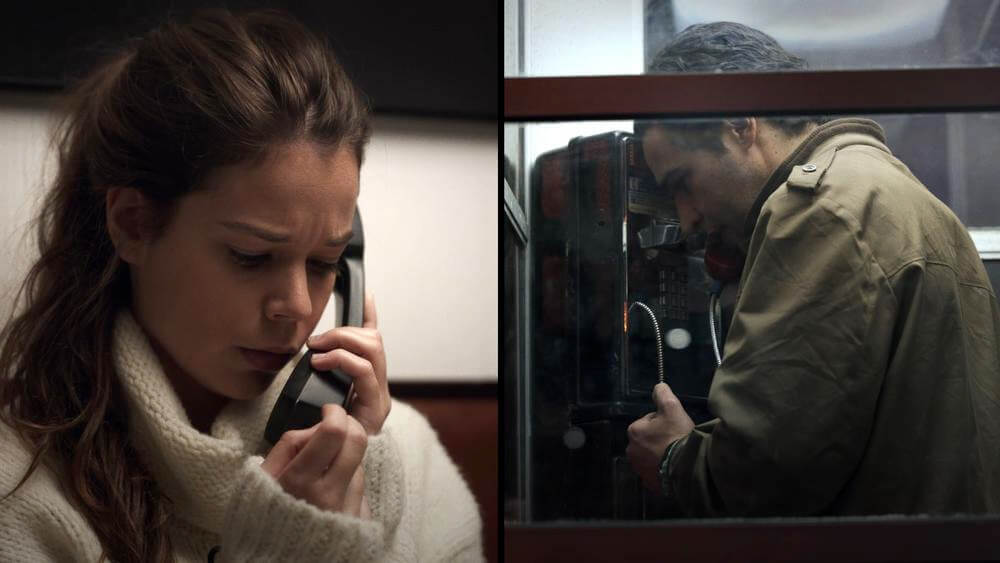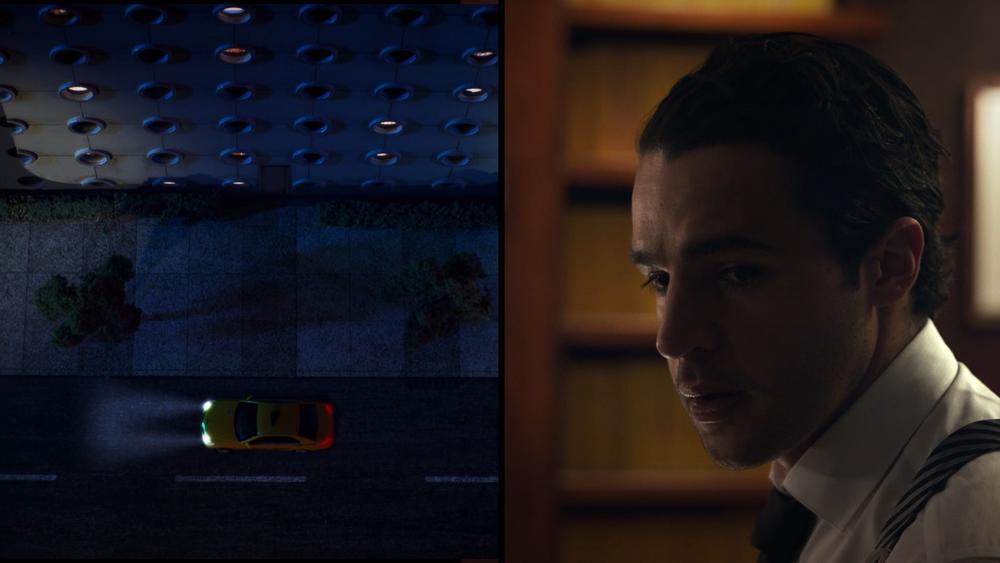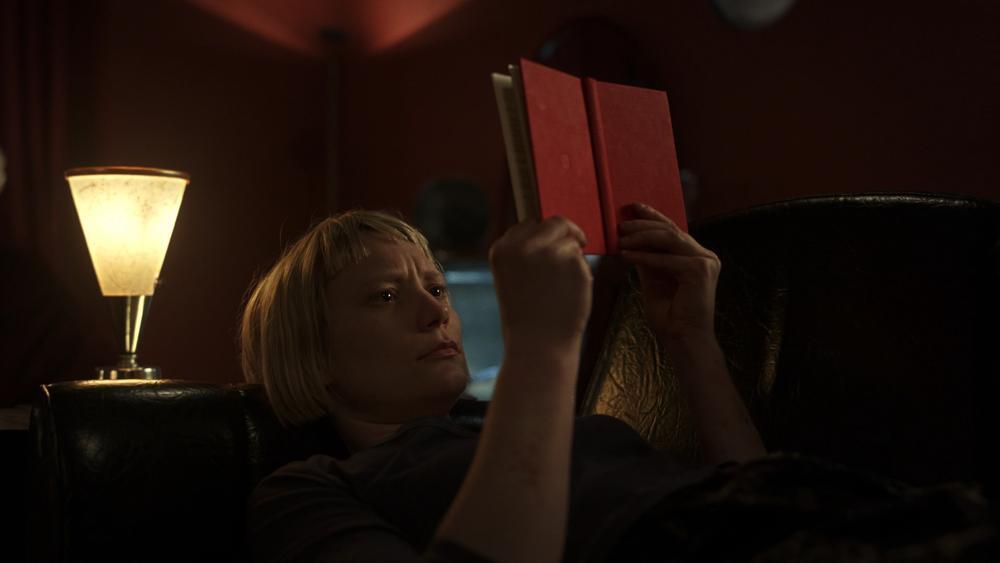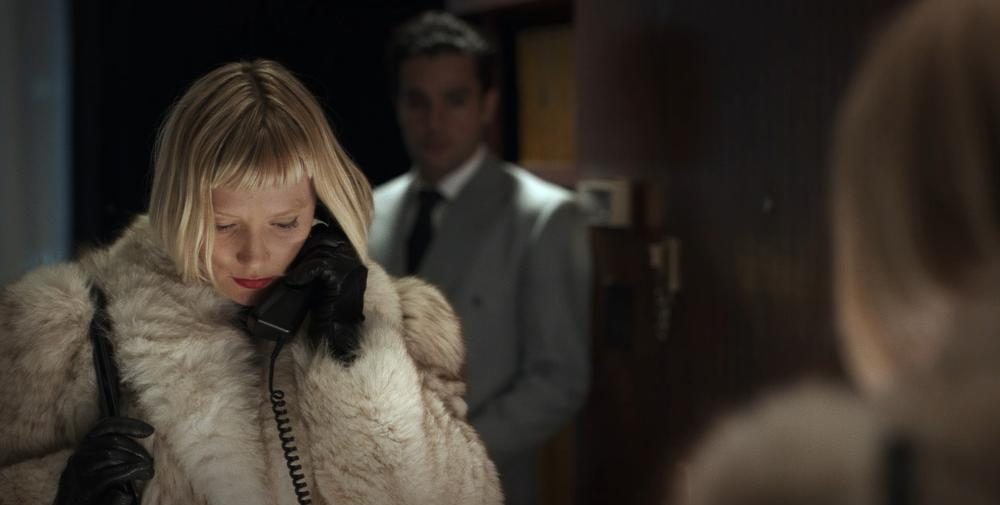Piercing is the ultra-stylish 2018 psychological-thriller film written and directed by Nicolas Pesce and based on the novel by Ryû Murakami. The story is simple but really packs a punch. Reed (Christopher Abbott) seemingly leaves on a business excursion. Instead, he plans to tame his bloodlust by murdering an unknowing sex worker. A psychosexual game of cat and mouse ensues. This review will look at the film without regard for the source material (the book), judging it as an entirely separate work.
The acting. The performances in this feature are all spectacular. Christopher Abbott proves that he's a leading man. Mia Wasikowska (Jackie, the sex worker) shows a complex web of emotions beneath what may or may not be a facade of ignorance, there are only really three characters in this movie, so each of them is expected to bring so much to the table and they all succeed. Not a single moment falls flat. Laia Costa (who plays Reed’s wife, Mona) pops up midway through the picture to deliver a short performance that defines how we interact with the film for the remainder of the runtime.

The pacing. The film is well-paced. We jump into the tension immediately the moment that Reed holds a sharp ice pick to his small innocent baby. Her only crime is being perfectly puncturable and perhaps also being female. The film’s plot is very simple, lending it to a shorter run time. It’s only 81 minutes. As a result, we waste no time and jump straight into the happenings of the film without delay. Piercing keeps you guessing when you’re supposed to be guessing and in the know when you're supposed to be in the know. As a result, you are fully engaged. It works.
The taste. Despite being a film about murder and sex, there is not a lot of gore, sex, or nudity in Piercing. It is extremely tasteful, which I loved because despite being someone who jumped at the idea of an erotic thriller, I hate sex scenes. A movie like this could have easily divulged into an over-sexualized specter of violence yet it doesn't do that for a second. Everything about this film is mental. It is a game between two characters, neither of which are entirely stable, and you get to be a part of it. Despite this, the visuals don't suffer for one second. The production designer (Alan Lampert), the art director (Naomi Munro), and the set decorator (Kristina Porter) all came together to create this contained, but visually engaging world. They chose palpable textures, deep reds with pops of bright yellow, deep reddish-brown woods, and a 1950's style modernism to bring this art deco world to life. The skylines and establishing shots of buildings are all fabricated, not real buildings. It looks almost real but extremely stylized. It is perfect. Every shot in this film is pleasing to the eye. The cinematographer Zack Galler truly had a vision for every moment on screen. The idea that every shot must be beautiful is something that is taught in books and schools but is something we rarely see executed. There is dynamism in the colors, textures, framing, movement, and blocking of every single shot. Piercing is endlessly pretty to look at.

The music. The music is ideal. It's reminiscent of Italian horror scores from the 1970s. There's even a song by the band Goblin, who has frequently scored Dario Argento’s films. The music was certainly a part of the storytelling although it's overbearing. The score is memorable.
The characters. They exist exclusively within this movie’s world. We only know the pieces of their backstories that directly have to do with the story at hand. We never learn of their lives or mannerisms outside of what has to do with the narrative. We're given enough to understand our characters to an extent. Our two main characters are not fully fleshed out, but that's okay. The film only gives us what we need, nothing more. Also, the characters are not entirely real. Their actions, words, motivations, and thoughts aren't entirely realistic or logical. This is the world of the film. Everything belongs to the film exclusively — the buildings, the characters, the settings, and the period: all of it is a fabrication of the movie. None of it is entirely authentic.

The best scene. My favorite scene comes early in the film. Reed is practicing how he will murder the sex worker and timing it. Set to the classic Brazilian song, “Girl From Ipanema”, Reed smoothly and effortlessly goes through the motions of murder in an idealized fantasy of how a perfect scenario would go. The scene is delightfully weird and has a charm to it that must be experienced. It comes at the 12-minute mark and was what made me decide that I was in love with the film.
The humor. Piercing is not a comedy, but I still found myself laughing at so many points throughout the film. Piercing plays with the audience’s and character’s expectations. The subversion of which becomes the source of humor rather than of shock. The awkwardness of the situations is cringey enough that it becomes funny. There’s always an audience for dark, awkward humor. Little gestures made by the characters express their level of discomfort. For example, when the conversation between Reed and Jackie does not go as he'd planned, he shows his discomfort with the unrehearsed conversation through his facial expressions and an inability to smoothly move forward.
The consensus. Piercing is my kind of film — I truly enjoyed every second of it, but I realize that my view of the movie is not representative of how most people feel. It seems to be a love it or hate it kind of film. [I’ve read reviews from people who rated it one out of ten!] I think it’s evident early in the film which camp you’ll belong to. I say watch the first 20 minutes and see how you feel. I’m clearly in the 10/10 camp.
Piercing probably has flaws but I'm blinded to them.
This is a perfect film — "Can we eat first?"


